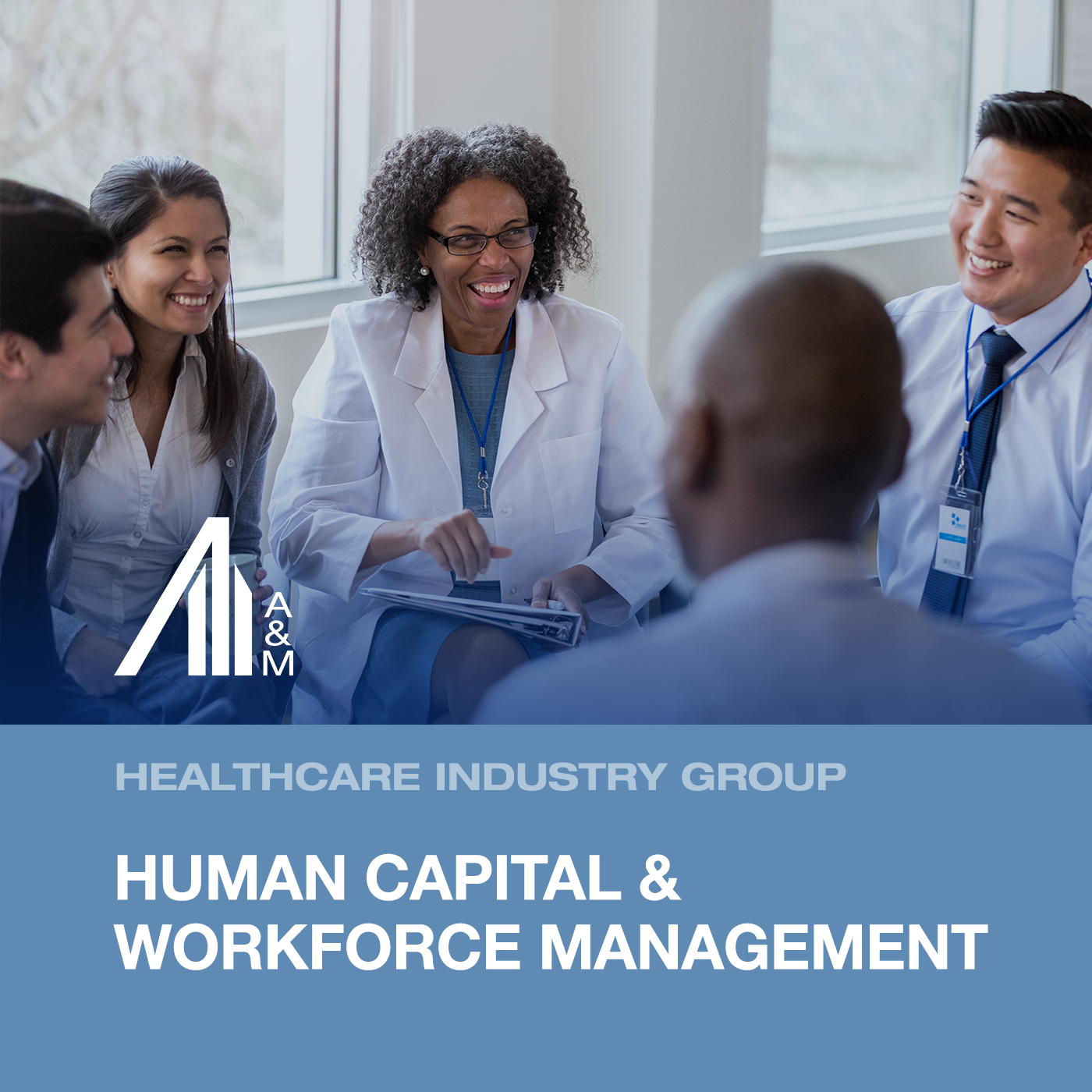Episode Transcript
[00:00:00] Joshua Gottlieb, Ph.D.: I would love to see innovative solutions to increase our workforce capacity. I think that's really where policy should be pushing, and to the extent that leaders are able to speak to policy makers and influence them in this regard, I think that's really valuable. We should be trying to make it easy for well-trained nurses to practice, whether that's across state lines or across international borders. We should support new schools, new training opportunities. I want to say, it's not just good for organizations. It's great for workers.
[00:01:03] Bianca A. Briola: Welcome back to the final part, part three of the A&M Healthcare Industry Group's podcast series on the rapid rise of labor costs and the impact on US healthcare organizations. I'm joined again by Chris Allen, Chief Financial Officer of the University of Southern California Keck Medical Center. Kimberly King Webb. She's the chief Human Resources Officer of CHRISTUS Health. Professor Joshua Gottlieb, who's an economist and associate professor at the University of Chicago Harris School of Public Policy and my colleague, Tere LeBarron.
Today we'll get an economist take on short-term labor markets and discuss some innovative solutions that our panelists are seeing. Let's jump right into what everyone always wants to know, what does the future hold. Professor Gottlieb, can you break out your crystal ball to give further insights to your last comments on how long we may expect this short-term labor market to last?
[00:01:59] Joshua: It depends on each individual shock that we're talking about. Remember when we started this discussion, we were talking about the depths of the pandemic when things were changing by the week, by the day and everyone's worried about an influx of patients as their communities start to get hit by COVID. I think we should ask our panelists who are really on the ground on this stuff for their experiences.
I think they would probably say that the costs of the short-term labor that they needed in order to get through that did fluctuate with the conditions of the pandemic and didn't last forever and what we're talking about now is responses to longer-term issues. Inflation will last, however long it lasts at a macro scale. The long-term issues of a number of nurses available nationally, that's going to depend on how quickly borders reopen and how quickly training can pick up.
It really depends on each individual factor. I think the way to deal with it for society is to try to relax these longer-term constraints, and the way to deal with it for an organization is really, of course, an organization can't change national supply of nurses, can't change immigration policy, but they have to be as efficient as they can using the strategies that Kimberly and Chris have been talking about to attract and retain staff.
Unfortunately, there's no magic. The labor market is what it is. As long as there are national shortages, prices are going to go up and as national shortages get relieved or as national demand falls, though I don't see any signs of that happening, but as national shortages get relieved, then organizations will have more flexibility. We have to take the world as it is. A leader in an organization has to do that.
A policy maker has more flexibility to try to make these changes. I would love to see innovative solutions to increase our workforce capacity. I think that's really where policy should be pushing, and to the extent that leaders are able to speak to policymakers and influence in this regard, I think that's really valuable. We should be trying to make it easy for well-trained nurses to practice, whether that's across state lines or across international borders. We should support new schools, new training opportunities.
I want to say, it's not just good for organizations. It's great for workers. Some of my research is about how nursing and healthcare jobs more generally have been great news for the middle class over the past 40 years. What we're talking about now is, of course from an organization's perspective, it's expensive. From a worker's perspective, that's good, that's higher income, that's more generous benefit, that's more job opportunities and that's great. We should encourage that. We should have training and allow more people to take advantage of these opportunities and provide valuable patient care in the process. We should view it as an opportunity. We should break down barriers to that training and allow more people to benefit.
[00:05:44] Bianca: Thank you so much. Chris, if things continue, since we're not sure how long it will last, that's what Professor Gottlieb basically said, if things continue, what happens? What are the long-term implications for you and your organization of wage inflation? What's that impact? What does that mean?
[00:06:10] Chris Allen: It's a tough one. We just completed our update of our long-range plan. One of the key metrics that I know I focus on is salary, wage and benefits as a percentage of our net patient revenue. Prior to the pandemic, it was somewhere around 47%. I extended the plan to a 10-year-plan. If things continue on this way, by the end of this decade, it'll be over 60% of our net patient revenue and that's just not sustainable for us.
As we continue to see our annual contract rates increases from our payers start to slide, as we continue to see Medicare increases slide, we are outpacing wage increases with rate increases. As I like to talk about it, when those two lines meet and are in the inverse, it's going to be hard for us to care for our patients in the way that we really want to. It's going to be hard for us to purchase new technology. It's going to be hard for us to even keep updated in terms of the supplies that we use.
We have to find more management initiatives to decrease our cost base in other places and manage the way we utilize resources in a much more efficient way, which for any academic medical center is difficult. We're not built to do that. We're built to be innovative and not necessarily focused on the way we widgetize healthcare. So it's something that we are focused on as a management team and really looking at what things we have to do to preempt those two lines crossing.
[00:08:21] Bianca: I love that metric that you're using to measure progress and challenges; salary, wages and benefits as a percentage of net patient revenue, NPR, I think is the number one way for you to understand trends in your organizations over the quarter, over five years. It's fascinating that you've already done the modeling and there are organizations now that are at 60%. That's frightening for you and yet we know that that's the situation that many organizations are right now.
In our last few minutes. I'd love to hear the perspective that you have Kimberly and Tere. There's a lot of talk about legislation to manage the expense that organizations like yours are experiencing related to wages for contract labor, for restrictions on contract labor. Do you think that this is going to come to fruition? Is it going to happen? What do you think?
[00:09:26] Kimberly King Webb: I wish I had a crystal ball, but if I'm a betting person I would say I don't see it happening, at least not as soon as we need it to happen and so it's not something that we're counting on. We're really just focused on how do we manage contract labor? How do we manage the rate and how do we manage the utilization of it and the things that we can control in this area as an organization?
[00:09:52] Bianca: Your answer is consistent with what everybody else has said. That's interesting, but probably not likely. Tere, you get the final word here in our last few minutes. What do you think the future looks like for us related to wage inflation, compensation going rampant? What does that look like?
[00:10:15] Tere LeBarron: Following with what Chris said, this increase in wages is going to become more of a permanent part of some of the calculations that we do when we're thinking about the margins that we're driving in healthcare. It is looking at the chain. If our costs go up in our hospitals, we're going to put pressure on insurance companies for greater premiums, and guess who pays those premiums? Employers and consumers. We're going to see, really, that upstream or downstream effect of these increased wages.
The way that we attack them in our healthcare systems is going to be another thing that we have to consider. Really watching waste, watching your productivity, making sure that you have the right person to do the right job at the right time. That you have enough people but not too many is another thing that we're seeing organizations pay much more attention to. Supply costs and any kind of waste that we can drive out of an organization, a healthcare organization is going to be key to trying to control those costs.
We've learned a lot during this pandemic about wages, about employment, about the cultures that we drive in our organization, and how they impact employees. Employees have choices now, and they're making them based on the culture and the benefits that organizations provide. That's my last word.
[00:12:03] Bianca: Wonderful. Thank you so much. This has been such a great conversation. I've learned a lot and more than anything, I've taken notes on future discussion topics. There's a lot to explore here. Thank you so much, Chris Allen, Kimberly Webb, Professor Gottlieb, Tere LeBarron. Thank you. Thank you. Thank you. Such wonderful insights. I appreciate all of your help with this.
Thank you for joining us for this insightful series. I'm so thankful for all of our panelists. For more information on this topic and other human capital and workforce management issues, please find us www.alvarezandmarsal.com.


